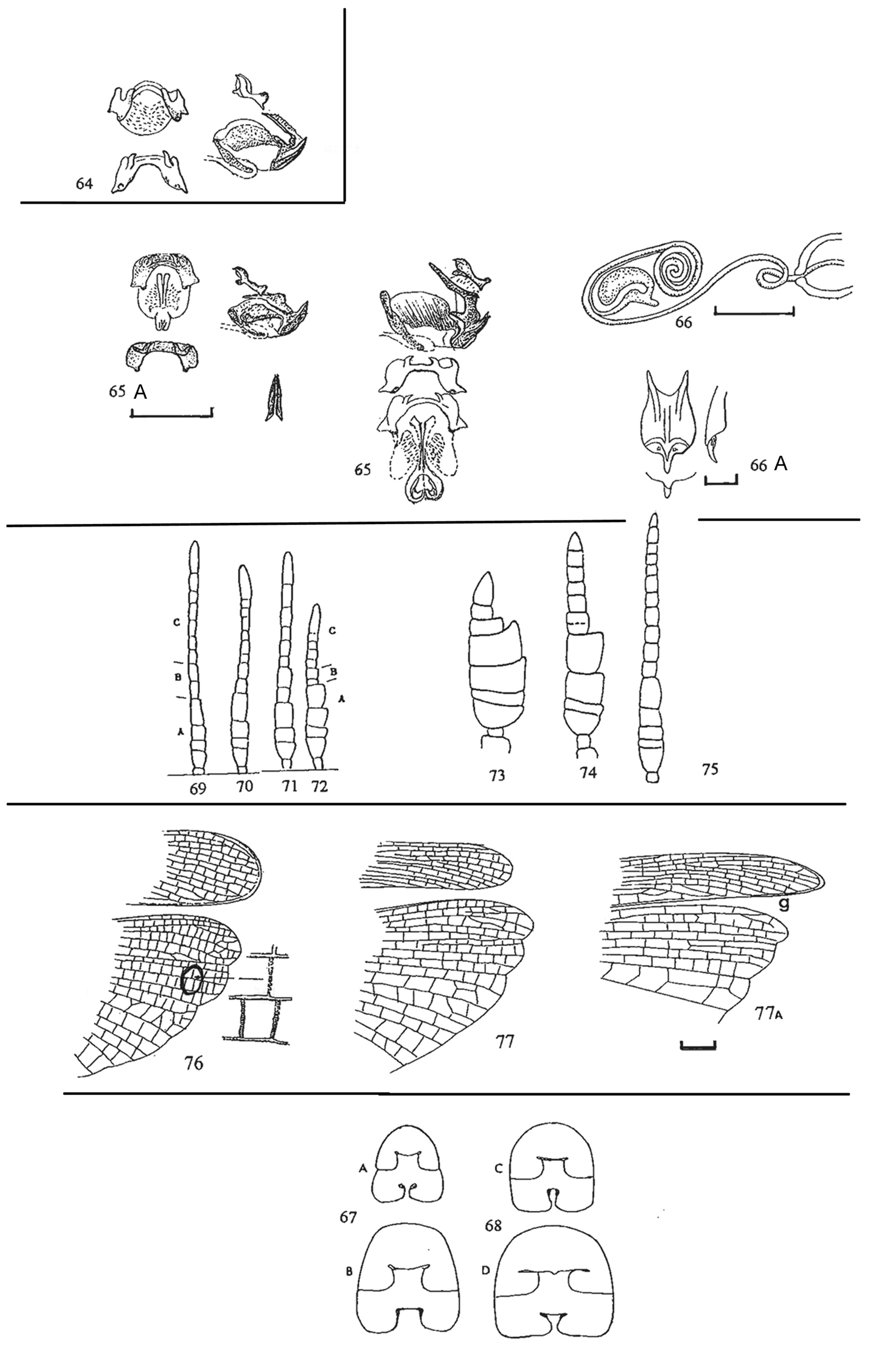
|
||
|
Morphology of the Ocnocerus genus group. Figs 64–66. Reproductive structures. 64, 65. Male phallic complex (lateral aspect whole complex; epiphallus and ectophallic membrane; dorsal aspect epiphallus); 64. Rhabdoplea munda Karsch, 1893; 65. Sumba roseipennis I. Bolívar, 1912; 65A. S. exilis sp. n.; 66. S. roseipennis, female genitalic complex - (66. Spermathecal duct; 66A. Subgenital plate, entire from above, tip from ventral aspect and tip from lateral aspect, left side). Figs 67–68. Meso- and metasterna of: 67A. Acteana alazonica Karsch, 1896 male, and 68B. Same, female; 68C. Anacteana neavei neavei I. Bolívar, 1912 male; 68D. Same, female. (Note: Acteana is not a member of this genus group, it is a member of the Pargaini, but very similar to Anacteana. See Figs 331–340). Figs 69–75. Antennal morphology. Figs 69–72. Variation in antennae of Anacteana n. neavei. 69. Male Tanzania, Ufipa; 70. Female same locality; 71. Male Zambia, Mweru wa Ntipa; 72. Female, same locality. Figs 73–75. Antennal morphology, other genera. 73. Hyperocnocerus sulculatus; 74. Ocnocerus diabolicus; 75. Panzia uvarovi. Figs 76, 77, 77A. Fore and hind-wing apices. 76. Panzia uvarovi (including enlarged section showing thickened cross-veins); 77. Sumba callosa; 77A. Sumba exilis n. sp., showing longer and more pointed tegmen. All scale lines represent l mm: that under Fig. 66 applies to Figs 64, 65 and 65A; that under Fig. 66A applies uniquely to it; that under Fig. 77A applies to Figs 76–77A. |